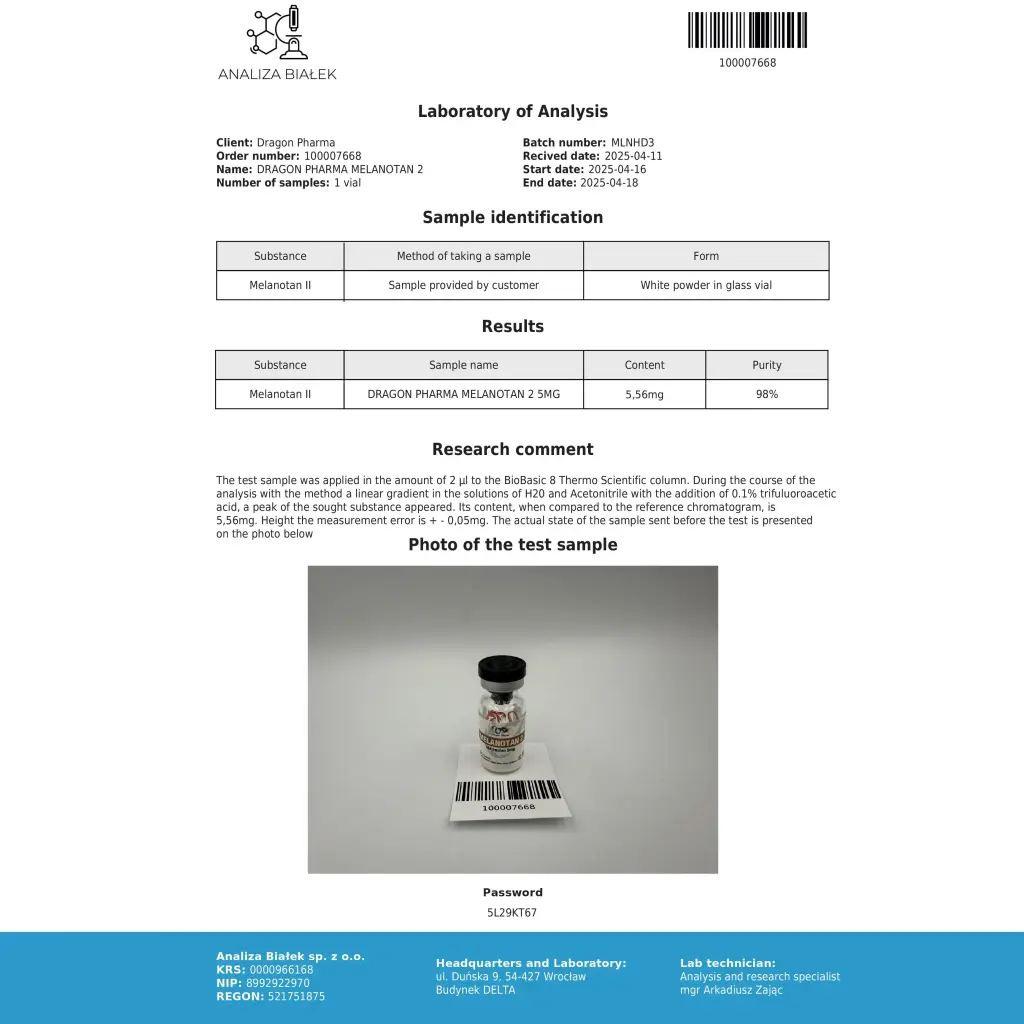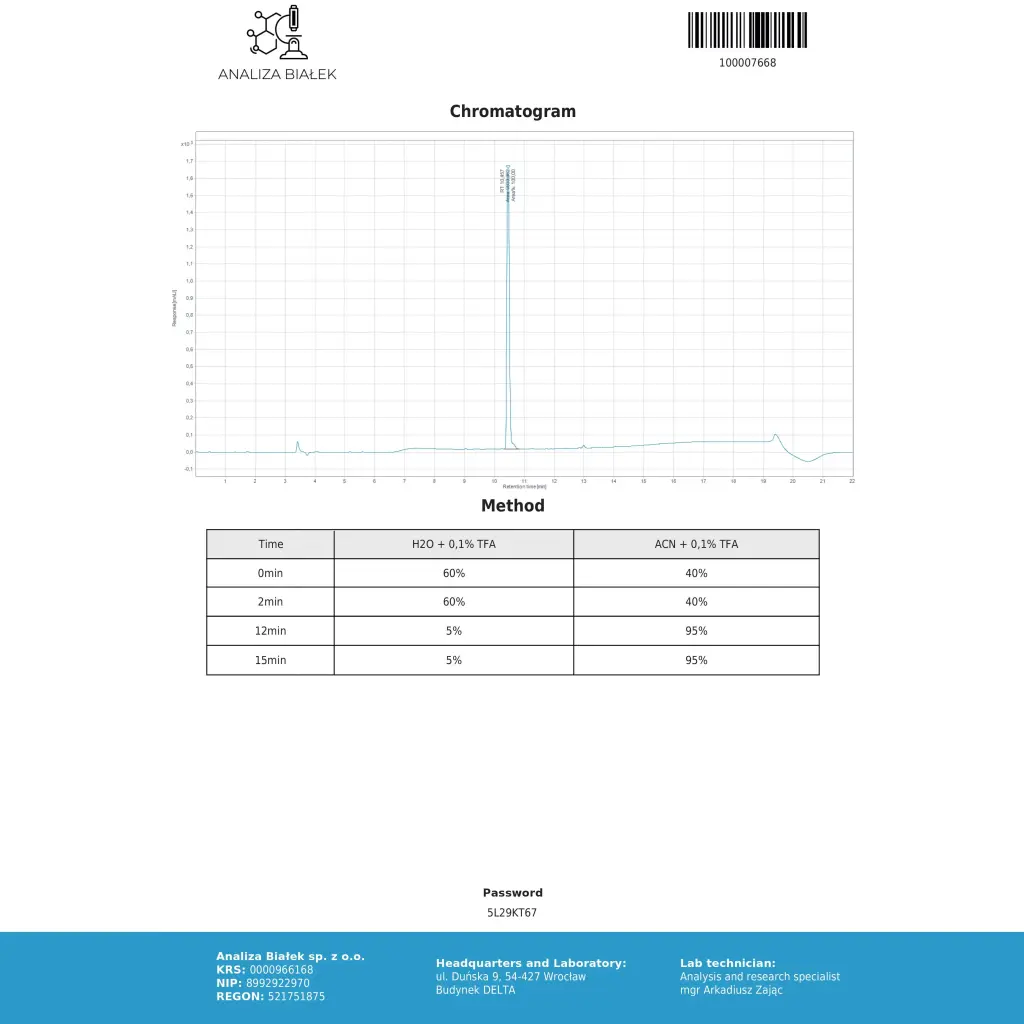





MANUFACTURER: Dragon Pharma, Europe
ACTIVE INGREDIENT: Melanotan
STRENGTH: 5mg
AMOUNT: vial
In the world of science and medicine, peptides have gained significant attention for their diverse therapeutic potential. Among these peptides, Melanotan 2 stands out as a fascinating compound with a unique history and promising applications in modern medicine. This article delves into what Melanotan 2 is, its historical context, successful uses, and how it might shape the future of medical treatments.
Melanotan 2 is a synthetic peptide derived from a naturally occurring hormone known as alpha-melanocyte-stimulating hormone (α-MSH). This compound was originally developed to stimulate the production of melanin in the skin, which helps protect against ultraviolet (UV) radiation. Essentially, Melanotan 2 promotes tanning without the need for sun exposure, making it an attractive option for those looking to achieve a bronzed appearance while minimizing the risk of skin damage associated with traditional tanning methods.
The history of Melanotan 2 dates back to the late 1980s when researchers at the University of Arizona were investigating ways to develop a drug that could afford protection against the harmful effects of UV exposure. The initial discovery led to the creation of Melanotan 1, but it was Melanotan 2 that demonstrated greater efficacy in stimulating melanin production. Over time, it garnered attention and use among bodybuilders, tanning enthusiasts, and individuals seeking a more uniform skin tone.
While Melanotan 2 is not approved by the FDA for any medical use, anecdotal evidence suggests that many users have reported successful outcomes, particularly in achieving deep tans with fewer side effects than traditional tanning beds or sunbathing. Additionally, some studies indicate potential benefits for conditions related to skin pigmentation disorders and even erectile dysfunction—a surprising twist in its profile that has piqued curiosity in various medical circles.
In certain countries, Melanotan 2 has been used off-label for cosmetic purposes, with individuals often purchasing it through online sources. While the outcomes can be appealing, caution is emphasized due to the lack of regulation and potential side effects, such as nausea and increased pigmentation of moles and freckles.
Looking ahead, Melanotan 2's role in medicine may evolve significantly. Researchers are exploring its potential beyond just cosmetic uses. For instance, its ability to stimulate melanin production may offer insights into treatments for skin cancer patients who require more protection against UV radiation during recovery. Additionally, its effects on appetite suppression and libido could lead to innovative therapies in the fields of obesity management and sexual health.
As the medical community continues to investigate the safety and efficacy of Melanotan 2, discussions surrounding its potential must remain grounded in scientific rigor. With further exploration and research, this peptide could very well become a valuable tool in both aesthetic and therapeutic settings.
Conclusion
Melanotan 2 represents a compelling intersection of beauty and medicine, with roots deeply embedded in scientific exploration. While its current applications are primarily cosmetic, the future could see it play a pivotal role in enhancing patient care and treatment options for various conditions. As interest in peptides grows, continuing our understanding of Melanotan 2 will be essential in determining its place in our healthcare landscape. Whether you're intrigued by its tanning capabilities or potential medical applications, Melanotan 2 remains a topic worth watching as science progresses.
Please log in to write Melanotan 2 (5mg) review.